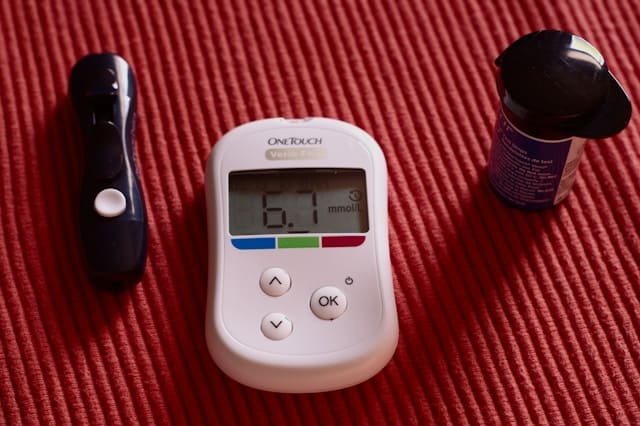How to Manage Diabetes During Travel?

Traveling is an exciting and enriching experience that everyone should have the opportunity to enjoy. However, if you are living with diabetes, the prospect of traveling can sometimes seem daunting. The unpredictability of travel schedules and meal times, coupled with the necessity of managing your insulin and blood glucose levels, can indeed present challenges. But rest assured, with proper planning and care, you can ensure your travels are safe and enjoyable. This comprehensive guide will provide insights on how to successfully manage diabetes while traveling.
Planning Ahead is Key
Before embarking on your journey, it is crucial to start planning weeks, if not months, in advance. This includes consulting with your healthcare provider to discuss your travel plans and any potential health concerns.
Lire également : How Does the Built Environment Influence Physical Activity and Obesity Rates?
Firstly, ensure your routine check-up is up-to-date and inquire about any necessary vaccinations. A pre-travel medical check-up is a great opportunity to assess your current health status, adjust your medication if necessary, and get advice about managing diabetes during your trip.
Discuss with your doctor about adjusting your insulin dosage according to different time zones. Your doctor can help you calculate how to adjust your insulin schedule if you will be crossing different time zones during your travels.
A lire aussi : What Are Effective Strategies for Reducing the Risk of Alzheimer’s Disease?
Another important step is to obtain a letter from your doctor explaining your diabetes, the medication you are on, and any other relevant medical information. This letter can be very beneficial for security checks at airports or in case of a medical emergency.
Packing Your Diabetes Supplies
When packing for your trip, your diabetes supplies should be a top priority. Adequate supplies include all medications, testing supplies, insulin pumps, and any other necessary medical equipment, such as a continuous glucose monitoring (CGM) device.
It is recommended to pack twice the amount of supplies you would usually need for the duration of your trip. This is to ensure that you have enough supplies in case of delays, loss, or damage to your luggage. It’s also a good idea to spread your supplies between your carry-on and checked luggage to mitigate the risk of lost baggage.
Remember to pack your supplies in clear, airtight plastic bags to protect them from damage and make them easily identifiable during security checks. Also, keep your insulin and any other sensitive medications in a cooler or insulated bag to protect them from extreme temperatures.
Managing Blood Sugar While On The Go
Maintaining stable blood sugar levels during long trips can be challenging. However, regular monitoring and smart dietary choices can help keep your glucose levels in check.
Monitor your blood sugar levels frequently, especially during long flights or car rides. Sitting for lengthy periods can affect your blood glucose levels, so make sure to check them often.
Nutrition is key when traveling. Avoid skipping meals and try to stick to a meal schedule as close to your usual one as possible. If you are unsure about the carbohydrate content of unfamiliar foods, err on the side of caution and take a smaller portion.
Emergency Preparedness
Being prepared for emergencies is crucial when traveling with diabetes. Always carry identification that clearly states you have diabetes. This information can be lifesaving in case of an emergency.
Keep a list of emergency contact numbers, including your healthcare provider, on your person at all times. Also, know the location of the nearest hospital or clinic at your destination.
Remember to pack some fast-acting glucose, like glucose tablets or gel, in case of low blood sugar (hypoglycemia).
Coping with Travel Stress
Traveling can often bring about unexpected stress, which can have an adverse impact on your blood glucose levels. It is important to practice stress management techniques such as deep breathing, meditation, or simply taking a few moments to relax and rest.
Stay hydrated and get enough sleep. These simple self-care measures can make a dramatic difference in how you handle travel stress and manage your blood glucose levels.
Remember, you have every right to enjoy your travels just as much as anyone else. With smart planning and self-care, diabetes does not have to hold you back from exploring the world. So take the necessary steps, plan ahead, and undertake your journey with confidence and peace of mind. Safe travels!
Optimizing Your Travel Itinerary With Diabetes
One of the key aspects of managing diabetes during travel involves optimizing your travel itinerary. This means planning your activities so that they fit comfortably with your meal and medication schedules.
Traveling across different time zones can affect your body’s biological clock, which could make it harder for you to manage your blood glucose levels. It’s crucial to work out an adjusted schedule for your insulin doses, particularly if you’re on a long-acting insulin regimen. Your healthcare provider can help you tailor a new schedule that aligns better with your destination’s time zone.
When planning the day’s activities, don’t forget to set aside time for meals and snacks. Regular meal times are an essential part of maintaining stable blood glucose levels. If you’re exploring a new city, try to locate some local restaurants or eateries that serve healthier food options. Foods that are low in sugar and high in fiber and protein can help keep your blood sugar levels in check.
Also, remember to plan for regular breaks to rest, especially if you’re walking around a lot. Overexertion can lead to fluctuations in your blood glucose levels, so it’s beneficial to pace yourself.
Ensuring a Smooth Journey Through Airport Security
Navigating through airport security can be a bit tricky when you’re traveling with diabetes supplies. However, being well-prepared can help ensure a smoother journey.
Keep a letter from your doctor explaining your diabetes condition and the need for your diabetes supplies in your hand luggage. This can help you avoid unnecessary complications at security checks.
It is crucial to pack your insulin pump and continuous glucose monitoring device in your hand luggage. Airport security scanners can potentially damage these devices if they are placed in your checked luggage.
Moreover, inform the airport security staff about your condition and your diabetes supplies before the screening process begins. This way, they can make the necessary accommodations, such as opting for a manual pat-down instead of a full-body scan if needed.
Conclusion
Traveling with diabetes might seem challenging, but with the right planning and management, it is wholly achievable. Taking the time to plan ahead, making smart dietary choices, monitoring your blood sugar levels frequently, and being prepared for emergencies are all essential components of a smooth and enjoyable traveling experience.
Remember, diabetes shouldn’t stop you from exploring new places and experiencing new cultures. So, go ahead and start planning your next adventure with confidence and peace of mind. After all, the world is waiting for you. Safe and enjoyable travels!
